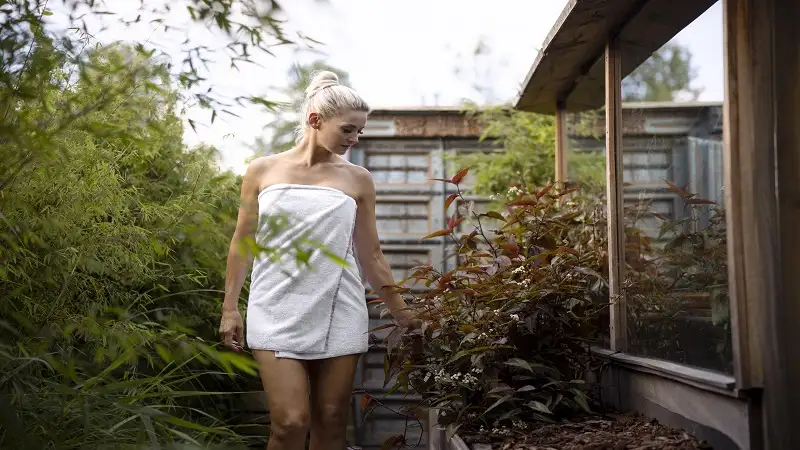Nature has an unmatched ability to transform any space into something calm, fresh, and alive. Among all natural elements, trees stand as one of the most powerful and enduring ways to bring beauty, balance, and serenity into your home design. Whether planted outdoors or thoughtfully incorporated indoors, trees can create a seamless connection between architecture and nature, turning an ordinary space into a personal paradise.
This article explores how trees can enhance your home’s design — from landscaping and interior aesthetics to sustainability and well-being.
The Role of Trees in Home Aesthetics
Trees are not just functional; they are living pieces of art. Their color, texture, and shape add dimension and depth to your home’s overall aesthetic. A mature tree outside your window, for instance, creates a dynamic view that changes with the seasons. The greens of spring, the golden hues of autumn, and even the bare branches of winter tell a visual story that enhances your home’s character.
By carefully selecting and placing trees, homeowners can create natural focal points. A graceful olive tree in a Mediterranean courtyard or a row of slender birches lining a modern driveway can completely redefine the mood and tone of a home.
Design tip: When planning, consider your home’s architecture. Contemporary homes pair beautifully with sleek, upright trees like Japanese maple or cypress, while traditional homes may benefit from fuller, shade-giving trees like oaks or magnolias.
Trees as a Bridge Between Indoor and Outdoor Spaces
One of the strongest design trends today is blurring the boundary between inside and outside, and trees play a crucial role in that. When visible from key interior spaces — such as the living room, kitchen, or even bedroom — trees draw the eye outward, extending the sense of space and making interiors feel larger and more open.
Placing a tree strategically outside a large glass window, for example, acts like a living art installation. Similarly, incorporating indoor-friendly trees like fiddle leaf figs, rubber plants, or indoor palms can bring freshness inside.
Design tip: To enhance this effect, align interior materials (like wooden floors or stone walls) with outdoor textures. This creates harmony between your indoor design and the natural landscape beyond.
The Environmental Benefits of Trees Around Your Home
Beyond aesthetics, trees are environmental powerhouses. They absorb carbon dioxide, produce oxygen, reduce air pollution, and provide habitat for birds and beneficial insects. But when placed around your home, they do even more — they help regulate temperature and improve air quality indoors and outdoors.
For instance, deciduous trees planted on the south and west sides of your home provide shade during summer but allow sunlight through in winter, reducing both cooling and heating costs. Evergreen trees, on the other hand, act as windbreaks and privacy screens year-round.
Sustainability tip: Choosing native tree species ensures less water use, fewer maintenance needs, and stronger ecological balance with local wildlife.
Enhancing Curb Appeal and Property Value
A well-landscaped yard with thoughtfully planted trees doesn’t just look beautiful — it adds real financial value to your home. Real estate experts consistently report that mature trees and quality landscaping can increase property value by up to 15%.
From the street, trees frame your home, creating depth and symmetry. A welcoming driveway shaded by leafy canopies or a front yard anchored by a single striking specimen tree (like a flowering dogwood or cherry blossom) leaves a lasting impression.
Design tip: When planning, think long-term. Small saplings may take years to reach maturity, but their eventual growth can define your home’s exterior beauty for generations.
Creating Peaceful Outdoor Living Spaces
Today’s homeowners see their gardens and patios as extensions of their living rooms. Trees can define these outdoor “rooms,” providing natural ceilings of shade and privacy. Sitting under a tree’s branches feels different — the dappled sunlight, gentle rustling leaves, and cool air together create a sense of calm that no artificial design can replicate.
Trees can also be used to mark zones in larger gardens. For example, a grouping of fruit trees can define a dining area, while a taller evergreen might act as a backdrop for a seating nook or firepit.
Design tip: Consider adding low-voltage lighting under or within trees to highlight their shape at night. This extends their beauty into the evening and makes your outdoor areas usable after sunset.
Trees Inside the Home: A Growing Trend
Bringing trees indoors might sound ambitious, but it’s an increasingly popular design choice in modern homes. With the right care, indoor trees add structure, color, and height to interiors — elements that typical potted plants can’t achieve.
Popular indoor trees include:
-
Fiddle Leaf Fig: Large, sculptural leaves that fit perfectly in modern or minimalist homes.
-
Rubber Tree: Rich green or burgundy leaves that complement warm, earthy interiors.
-
Olive Tree: Subtle and airy, great for Mediterranean or neutral spaces.
-
Indoor Citrus Trees: Add fragrance and a bright, cheerful vibe to kitchens and sunrooms.
Care tip: Ensure adequate sunlight and proper drainage. Placing indoor trees near east or south-facing windows often provides the perfect balance of light.
The Psychological and Health Benefits of Trees
Trees do more than beautify spaces — they heal. Numerous studies show that spending time near trees reduces stress, lowers blood pressure, and improves mood. Even simply viewing trees from a window can enhance concentration and promote relaxation.
Incorporating trees into your home design helps create an environment that promotes well-being. The sense of tranquility and freshness they bring encourages mindfulness, creativity, and deeper connection with nature — things we need more than ever in our modern, fast-paced lives.
Well-being tip: Create a “green view” from your main living areas or workspace. Just seeing greenery throughout the day can significantly improve mental health and focus.
How to Choose the Right Trees for Your Home
Not all trees suit every space or climate, so thoughtful selection is essential. Consider these factors before planting or bringing trees indoors:
-
Climate and Soil Type: Choose species that naturally thrive in your region.
-
Space and Scale: Large trees like oaks or maples need room to grow, while smaller options like Japanese maples or crepe myrtles suit compact gardens.
-
Purpose: Are you seeking shade, privacy, fruit, or decorative value? The answer determines your choice.
-
Maintenance: Some trees shed heavily or require pruning — make sure you’re prepared for the upkeep.
Design tip: Mix trees with shrubs, flowers, and pathways for layered landscaping that feels rich and intentional.
Combining Trees with Modern Architecture
Modern architecture and trees can form stunning partnerships. Sleek glass walls, concrete facades, and sharp lines find softness and warmth when balanced by natural greenery. A minimalist home surrounded by well-positioned trees doesn’t just look elegant — it feels alive.
Architects often design homes around existing trees, turning them into central features. For example, a courtyard built around a single old oak or a home where a tree grows through an open terrace blurs the line between built and natural spaces beautifully.
Design idea: Consider using trees as privacy solutions in place of fences or walls. A carefully planted row of bamboo or evergreens can screen your property stylishly while maintaining a natural aesthetic.
Final Thoughts: A Living Investment in Beauty and Balance
Integrating trees into your home design isn’t just about decoration — it’s about creating a living environment that grows and evolves with you. Trees breathe life into static spaces, connect us with nature, and remind us of the power of growth, balance, and patience.
From improving curb appeal to boosting mental health, their influence reaches far beyond aesthetics. By bringing trees into your home’s design — whether outside in the landscape or indoors as green companions — you’re making an investment that enhances both your property and your quality of life.
In the end, trees do more than beautify homes — they make them feel alive.

